Why do Health O Meter 500KL say 'Lo'?
- EEric SimonSep 8, 2025
If your Health O Meter Scales show a “Lo” message, this indicates that the batteries are low. You should replace the batteries as per the provided instructions.

Why do Health O Meter 500KL say 'Lo'?
If your Health O Meter Scales show a “Lo” message, this indicates that the batteries are low. You should replace the batteries as per the provided instructions.
Why are my Health O Meter Scales giving the wrong weight?
If your Health O Meter Scales are giving questionable weight readings or not zeroing, it could be due to several reasons: 1. Something might be interfering with the scale (remove the object). 2. The display didn't show “0.0” before weighing (ask the patient to get off, zero the scale, and restart). 3. The scale isn't on a level floor (place the scale on a level floor). 4. The scale is out of calibration (check the weight with a known weight).
What to do if Health O Meter 500KL display shows “Over” message?
If your Health O Meter Scales display shows 'Over', it means the weight on the scale exceeds its maximum capacity of 500 lb / 220 kg. Remove some weight to bring it within the scale's limits.
Why weighing process on Health O Meter 500KL takes too long?
| Graduation | 0.2 lb / 0.1 kg |
|---|---|
| Auto-On | Yes |
| Auto-Off | Yes |
| Display | LCD |
| Functions | Weight |
| Capacity | 500 lb / 220 kg |
Covers general operational safety, weight limits, battery handling, patient attendance, and operational cautions.
Covers specific warnings and instructions when using the AC adapter for power.
Explains the scale's compliance with EMC limits and how to handle potential interference.
Provides an overview of the scale's technology, features, and general capabilities.
Details capacity, resolution, power requirements, environmental conditions, and dimensions.
Explains the meaning of various icons and indicators used on the scale.
Details the ISO and MET certifications applicable to the scale.
Explains the scale's USB connectivity and EMR-EHR compatibility for data transfer.
Provides instructions for the proper disposal of the scale as electronic waste.
Guidance on inspecting the package, parts list, and tools needed for assembly.
Instructions for unpacking and preparing parts, with a warning about pinch points.
Details on removing mounting screws and attaching the bracket to the column.
Guide on routing the load cell cable and securing columns together with a caution.
Instructions for positioning the platform and connecting the load cell cable to the RJ jack.
How to attach the assembled columns to the scale platform using screws.
Instructions for assembling the height rod components.
Steps for inserting the assembled height rod into the scale's main column.
Step-by-step guide on how to install 6 AA batteries into the scale.
Instructions for connecting the optional AC adapter for power.
Description of each button on the scale's keypad and its function.
Step-by-step guide on how to weigh a patient using the scale.
Guidelines for using the height rod to measure patient height.
Instructions on how to position the patient correctly for height measurement.
Explains how to read the height from the scale's measuring strip.
How to calculate and display Body Mass Index using weight and height.
Instructions for enabling or disabling the automatic power-off feature.
How to set the scale to display weight in KG only or LB only.
Procedure for using the tare function to zero out the weight of an object.
Guidance on inspecting the scale for damage and proper function.
Steps for safely cleaning the scale.
How to obtain replacement parts for the scale.
Step-by-step instructions for calibrating the scale using standard weights.
A guide to identifying and resolving common operational problems with the scale.
Explains the terms, coverage, exclusions, and service process for the scale's warranty.
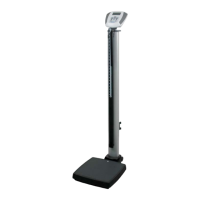
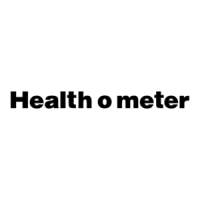
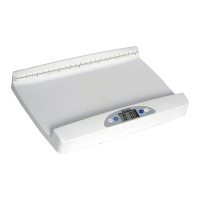
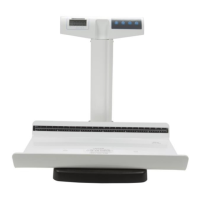
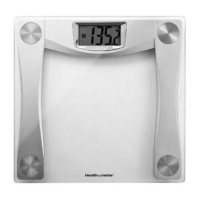
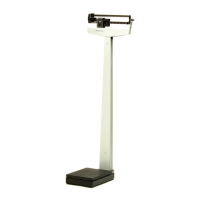
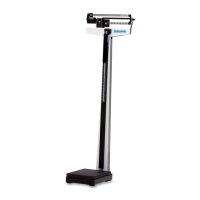
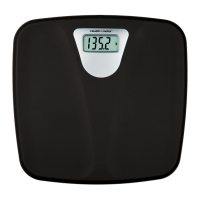
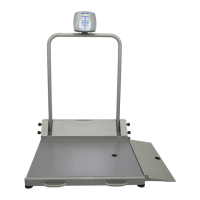
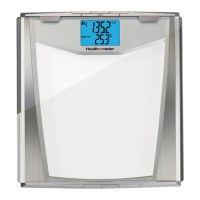
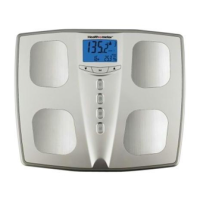
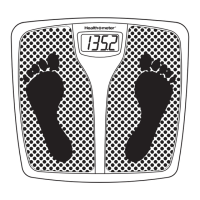
